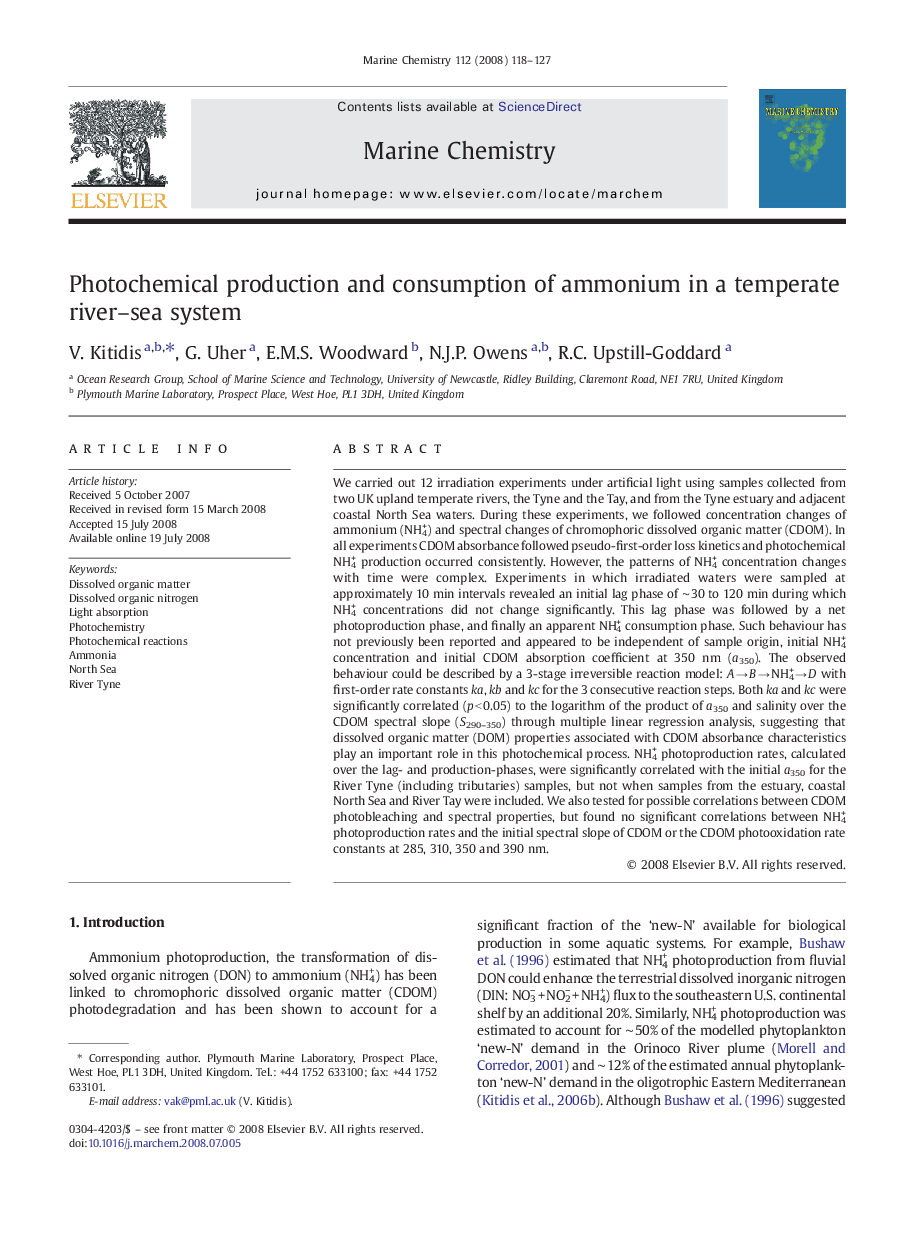| Article ID | Journal | Published Year | Pages | File Type |
|---|---|---|---|---|
| 1262087 | Marine Chemistry | 2008 | 10 Pages |
We carried out 12 irradiation experiments under artificial light using samples collected from two UK upland temperate rivers, the Tyne and the Tay, and from the Tyne estuary and adjacent coastal North Sea waters. During these experiments, we followed concentration changes of ammonium (NH4+) and spectral changes of chromophoric dissolved organic matter (CDOM). In all experiments CDOM absorbance followed pseudo-first-order loss kinetics and photochemical NH4+ production occurred consistently. However, the patterns of NH4+ concentration changes with time were complex. Experiments in which irradiated waters were sampled at approximately 10 min intervals revealed an initial lag phase of ∼ 30 to 120 min during which NH4+ concentrations did not change significantly. This lag phase was followed by a net photoproduction phase, and finally an apparent NH4+ consumption phase. Such behaviour has not previously been reported and appeared to be independent of sample origin, initial NH4+ concentration and initial CDOM absorption coefficient at 350 nm (a350). The observed behaviour could be described by a 3-stage irreversible reaction model: A → B → NH4+ → D with first-order rate constants ka, kb and kc for the 3 consecutive reaction steps. Both ka and kc were significantly correlated (p < 0.05) to the logarithm of the product of a350 and salinity over the CDOM spectral slope (S290–350) through multiple linear regression analysis, suggesting that dissolved organic matter (DOM) properties associated with CDOM absorbance characteristics play an important role in this photochemical process. NH4+ photoproduction rates, calculated over the lag- and production-phases, were significantly correlated with the initial a350 for the River Tyne (including tributaries) samples, but not when samples from the estuary, coastal North Sea and River Tay were included. We also tested for possible correlations between CDOM photobleaching and spectral properties, but found no significant correlations between NH4+ photoproduction rates and the initial spectral slope of CDOM or the CDOM photooxidation rate constants at 285, 310, 350 and 390 nm.
